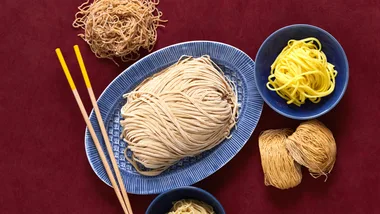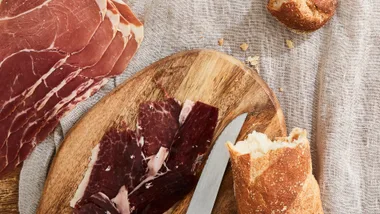WHAT TO PLANT IN MARCH
Cool/mountainous climate
Beetroot – seed
Broad beans – seed
Broccoli – propagate
Brussel sprouts – propagate
Bok choi/pak choi – seedling
Carrot – seed
Cabbage – propagate
Cauliflower – propagate
Celery – seedling
Fennel – seedling
Garlic – bulbs
Herbs (all except basil) – seedling
Kale – seedling
Lettuce – seedling
Parsnip – propagate
Peas- seed
Rocket – seedling
Radish – seed
Silverbeet – seedling
Spinach – seedling
Spring onion – seedling
Turnip – propagate
Strawberry – seedling
Swede – propagate
Temperate climate
Beetroot – seed
Broad beans – seed
Broccoli – propagate
Brussel sprouts – propagate
Bok choi/pak choi – seedling
Carrot – seed
Cabbage – propagate
Cauliflower – propagate
Celery – seedling
Fennel – seedling
Garlic – bulbs
Herbs (all except basil) – seedling
Kale – seedling
Lettuce – seedling
Parsnip – propagate
Peas – seed
Rocket – seedling
Radish – seed
Silverbeet – seedling
Spinach – seedling
Spring onion – seedling
Turnip – propagate
Strawberry – seedling
Swede – propagate
Sub-tropical climate
Beetroot – seed
Broad beans – seed
Broccoli – propagate
Bok choi/pak choi – seedling
Carrot – seed
Cabbage – propagate
Capsicum – seedling
Cauliflower – propagate
Celery – seedling
Chilli – seedling
Cucumber – seedling
Eggplant – seedling
Herbs (all) – seedling
Kale – seedling
Lettuce – seedling
Pumpkin – seedling
Rocket – seedling
Radish – seed
Peas – seed
Silverbeet – seedling
Spinach – seedling
Spring onion – seedling
Squash – seedling
Strawberry – seedling
Zucchini – seedling
Tropical
Beetroot – seed
Bok choi/pak choi – seedling
Carrot – seed
Capsicum – seedling
Celery – seedling
Chilli – seedling
Cucumber – seedling
Eggplant – seedling
Herbs (all except basil) – seedling
Lettuce – seedling
Pumpkin – seedling
Rocket – seedling
Radish – seed
Silverbeet – seedling
Spinach – seedling
Spring onion – seedling
Squash – seedling
Strawberry – seedling
Zucchini – seedling
Powerful, pungent and so essential, garlic has a long growing time, but low maintenance and freshness reward your patience.
There’s something special about garlic that makes it more than just a vegetable. It’s believed to be antibacterial and antiviral – and used liberally in just about every homemade remedy for the common cold – and versatile enough to deter the advances of an overenthusiastic, unwanted love interest. What other vegetable can do that?
In the kitchen, garlic should not be thought of only in terms of heads and cloves. The foliage of the plant is just as useful, and sautéed through a stir-fry or your morning eggs, is a subtler delight.
The adventure of growing garlic transpires over many months, where the anticipation at harvest time builds to one of the ultimate lotteries. But, of course, anything you pull out of the ground is a reward because as seasoned food lovers we are aware of the power of the produce, and the bouquet and pungency of fresh garlic cannot be surpassed.
Theories get thrown about for when to plant and harvest garlic, and for us it’s a personal one. The best day to plant garlic is the day you make pasta sauce – that is, knee deep into the tomato harvest – and the best day to harvest is tomato planting day. That way it is explicitly linked to our other favoured vegetable and we can experience the full range of emotions on those special days. It also suits its growing requirements.
Planting and harvesting garlic is separated by a gulf of time, upwards of nine months, but patience is always rewarded. To buoy the spirits of lazier gardeners, most of the growing requirements for garlic are supplemented by the weather gods. Essentially, the bulbs are put to sleep for the entire winter when they happily get by on rainfall and not being disturbed by overenthusiastic gardeners smelling about for an early harvest.
When planting garlic ensure you source certified organic bulbs. Avoid using heads you buy from the supermarket, which are often imported and can carry diseases to your patch. Break up the head and plant the cloves separately, spaced every 10cm-15cm. A common misconception is you need to plant an entire head to reap another head of garlic. It doesn’t make a lot of sense to bury a perfectly good head to dig it up nine months later.
Ensure you plant the cloves standing upright, meaning the tip – from where the sprout will shoot – is pointing skywards. A lot of garlic you buy for planting will already be sprouting, making identification more straightforward. Bury each clove about 2cm-4cm deep in a good, friable soil and give them a good soaking.
The cloves should sprout within a fortnight and the journey begins. Keep them well hydrated in the warmer autumn months, watering every couple of days; as the rains come, cut back and spend a little more time in your armchair by the fire. Feed the garlic with liquid seaweed fertiliser every month, and in midwinter, as the bulbs begin to form, apply a fertiliser high in phosphorous to help them swell.
As you approach tomato planting day the foliage will begin to die. Cut back on water to allow the bulbs to mature in the ground, checking their progress by digging with your fingers along the stem. To harvest, gently pull on the foliage with the sort of pressure you would use to pull your sister’s hair to annoy her. It helps to loosen the soil with a hand fork, being careful not to pierce the bulbs.
Garlic can be eaten fresh, when the skin is soft like wet paper. To store the bulbs properly, though, make a nice plait of them and hang it in a cool, dry place. This not only helps the garlic keep for many months but will impress visitors.
Tip of the month: cooling soil
Soil temperature dictates when plants can be grown. When the soil begins to heat under the spring sun, warm season crops come out to play. Similarly, in autumn, as the temperature drops so does the soil, allowing for the new season’s crops.
Rather than letting the weather gods have all the control over your patch, you can exert influence over the soil temperature and gain a head start on the coming season.
Short of digging up the vegetable garden and popping it in the refrigerator, remove the mulch from the area you wish to plant autumn crops. This is like opening up the house after a string of hot days, and lets the soil breathe and emit the build-up of heat.
Of course, early autumn is known for hot days too, so if your car can do without its sunshield, use it on your patch to reflect the heat. It seems like a lot of work, but if you’re serious about growing autumn vegetables there will have to be some sacrifices.
Illustration Tom Bingham










